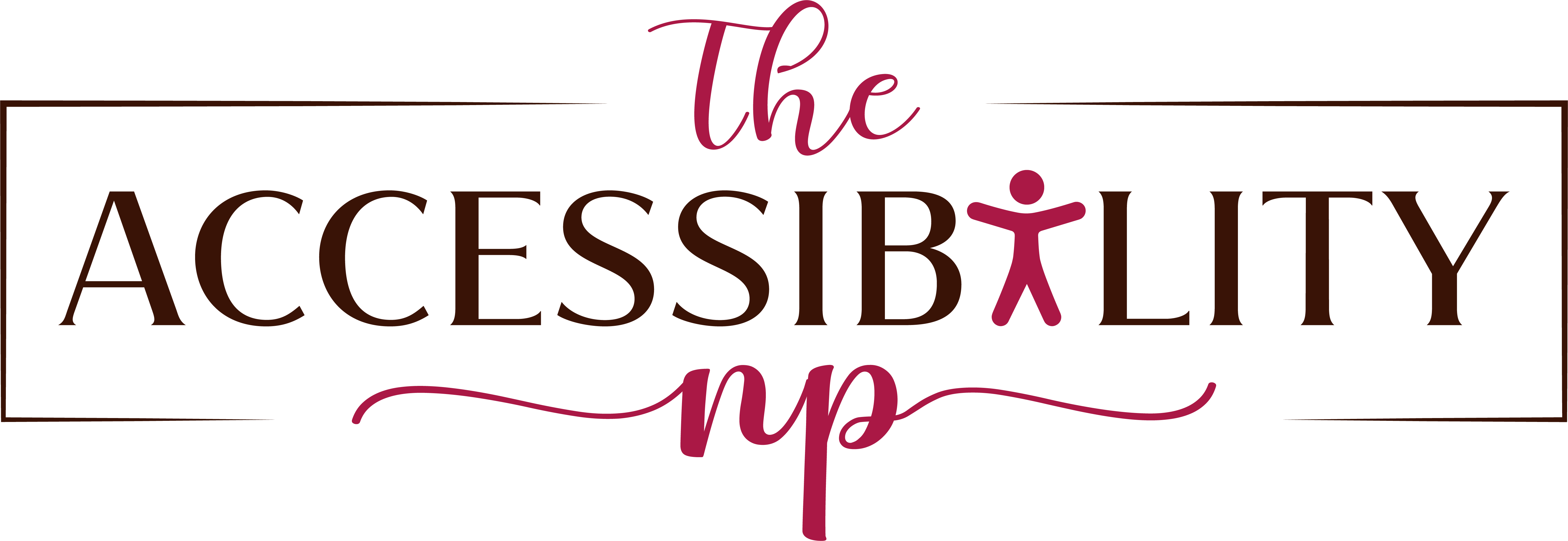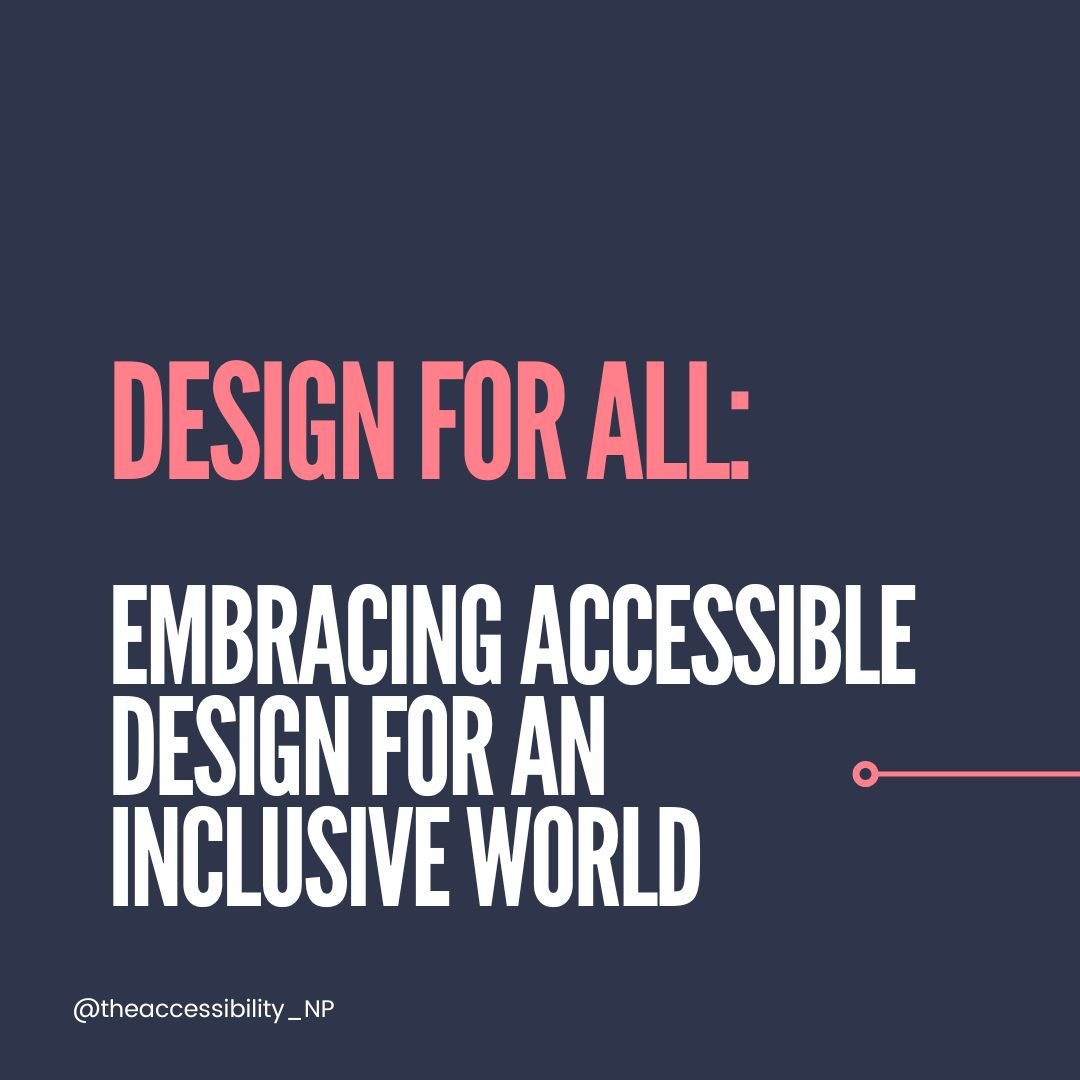The accessible design focuses on having a seamless environment fulfilling the needs of individuals with diverse abilities, creating a sense of inclusivity and empowerment.
The vision of accessibility isn’t a far-fetched dream but rather an attainable reality through the implementation of accessible design.
From curb cuts and automatic doors to braille signage and audio description, accessible design is a key elem
ent to creating an inclusive society that values the diversity of its members.
In this modern era, technology and design have the power to shape your lives; it’s more significant than ever to consider the needs of people and strive for a world where accessibility isn’t an afterthought but a fundamental aspect of design.
Have you ever wondered why the text messages system was developed?
The development of this channel was for deaf individuals so they could communicate their message through their smartphones. Today, texting is a universal communication system supporting an accessible and inclusive design.
In this blog, learn about the accessible design process and its importance for people with disabilities.
What is an Accessible Design?
Accessible design, known as universal or inclusive design, is a foundational approach focusing
on designing materials, services, technology, and systems used for a wide range of humans with abilities or disabilities without adaptation or specialized design.
It aims to establish an inclusive and equitable society where people with physical, sensory, and cognitive impairments can participate in every aspect of life. Also, it ensures each avails the opportunity to participate in society to access services.
Accessibility creates products with design value to avoid costs on redesign and technology and saves resources. This approach rejects ‘one size fits all’ and considers individual demands in the design process.
You can apply the design principles to various products and spaces, including buildings, public transport, technology, and websites. Using the accessible design, you can create a more inclusive world where everyone has equal access to opportunities and resources.
Understand your product’s accessibility and enhance user experience, even for those with vision defects, blindness, hearing disabilities, motor impairments, or working disabilities.
Principles of accessible design
Here are the principles of accessibility to enhance user experience.
1. Perceivable
Information and user interface should be presentable to users so that they can perceive it. Make the content available in different formats, such as text, images, videos, and audio.
2. Operable
Create an operable user interface and navigation system. Therefore, users can operate the system through input, including a keyboard, mouse, or touch.
3. Understandable
Users understand clear information and can operate a clean interface. It helps users understand the content and how to use the interface.
4. Robust
Rich content is enough to interpret a wide range of user agents, including assistive technologies.
Features Of Accessible Design
- Wheelchair ramps
- Audio Descriptions
- Closed captioning
- Adjustable height counters
Why Does Accessible Design matter?
It’s an honest and ethical approach. Shifting people away from the current information cuts their basic needs.
In this digital world, technology should be simple so that people with disabilities can attain human rights in education, jobs, and the economy.
The U.S. Convention on the rights of persons with disabilities declared that it is the right of disabled people to get access to technology and communication to achieve basic living standards.
1. It’s a Legal Requirement
In 1990, the U.S. convention passed an Americans with Disabilities Act to forbid discrimination and provide every individual with equal opportunities. U.S. companies have to comply with the Act; otherwise, strict actions are taken against them. However, many businesses feel it is a burden to accept compliance, as it could risk their resources, and they will have to devote solutions. If you aim to be a digital leader, you have no right to consider whether disabled people will visit your website or buy your products. Your products should be versatile that fit every person’s needs, whether abled or disabled.
2. It’s a Profitable Business
Overlooking the societal segments, executives think it pleasurable to serve people with disabilities.In 2018, a large consumer group was adults with disabilities, whose purchase was $490 billion. Thus, companies designing accessible products can generate approximately $21 billion in income. Did this decent amount blow your mind? Business innovation is expanding, and they are inducing inclusivity in their design to appeal to universal groups.
3. It Produces a Better Design
A common perception of companies is that embracing inclusive design adds more design research, resources, efforts, and money that might slow the development process. This is the right perspective since an accessible format requires clear navigation to obtain effective and intuitive products. But it’s an afterthought; research doubles the rigor level of the product and produces a better design that suits all – usable either for a small set or a large set of people.
How can companies use accessibility in their design process?
There are several ways companies can adopt accessibility, inclusivity, universality, and usability features in designing products, services, or environments.
1. Understand the Need of Users with Disabilities
Companies should know the perspectives and preferences of users with disabilities, including limitations and challenges. Perfect research, user testing, and feedback from people can help comprehend and assess their sufferings.
2. Adopt an Inclusive Mindset
Designers are problem solvers who can spur their innovation to produce an accessible and inclusive design. They offer the best solutions, from the product’s contrast ratio, font size, features, elements, and optimization. These are all that a designer has a deep understanding of.
3. Integrate Accessibility into the Design Process
Companies should integrate accessibility into the design process from the start. From ideation to implementation, it’s the best strategy to consider accessibility at every step of the design process.
4. Follow Guidelines and Standards
There are several accessibility guides and standards for companies to ensure their product and services are accessible, such as Web content accessibility guidelines (WCAG) and the Americans with Disabilities Act (ADA).
5. Provide Training and Resources
Companies can provide training and designing resources to designers and developers on accessibility practices, guidelines, and standards. It includes training sessions, online resources, and accessibility toolkits.
6. Testing Accessibility
Companies should test their products and services through automated tools and manual testing tools by people with disabilities. Thus, it helps them to improve and develop changes in their designs.
7. Obtain Feedback from People with Disabilities
Companies designing or releasing a product can obtain feedback from groups of people to improve accessibility.
The Inclusive Design
Designing strategy aims to offer products that are accessible, easy, and efficient for disabled humans.
Benefits of Inclusive Design
Showing empathy and understanding the needs of people with disabilities is the major purpose of inclusive design.
1. Create Better Products and Services
Inclusive design is a valuable approach to producing better products and improving services. This way, designers can pick accessible, easier-to-use, and effective for every person.
2. Enhances Usability
Focusing on the inclusivity of products and services makes them user-friendly, convenient, and easy to use. It is the best approach to enhance user experience.
3. Promote Innovation
Such designs encourage designers to think out of the box to induce creativity and innovation in the products and services that work for everyone.
Example
Smartphone Voice Assistant: Voice assistants like Google Assistant or Siri allow people with visual or physical disabilities to use their smartphones without relying on sight or touch.
Closed Captions: Closed captions create video content accessible to people who are deaf or have hearing impairments, but they also benefit people in noisy environments who can’t hear audio.
Accessible Transports: Transports such as buses and trains with wheelchair ramps and audio announcements lessen disabled people’s stress making it easier for them to travel.
Universal Design
Universal design has a complete command of usability, flexibility, and simplicity.
Principles of Universal Design
Read the principles and know what factors to consider when designing a product.
1. Equitable Use & Flexibility
The design approach is useful and accessible to people with diverse abilities and disabilities, focusing on preferences.
2. Simple & Intuitive
Offering design that is easy to understand and convenient for handling, irrespective of user experience or education.
3. Perceptible Information
The design should convey essential information to the user. For instance, lab apparatus with control keys.
4. Error of Tolerance
Use of a design process to reduce hazardous or adverse consequences, including accidents.
5. Low Physical Effort
Universal design minimizes fatigue since it provides efficient and comfortable products or services—such as automatic doors.
6. Size & space for approach
Provide suitable size and space so it’s accessible for users in any posture, mobility, or space.
Conclusion
Being a part of society, you should recognize the importance of accessible design and promote it in every aspect. It includes encouraging accessibility in public places, supporting businesses and organizations that prioritize inclusive design, and educating people about its requirements.
If you want to achieve accessibility in your designs, consider individuals with disabilities when designing products. Know their insights and get feedback to ensure the product, service, and environment fits their needs. Accessible design is not only a legal requirement but a moral imperative. It’s the responsibility of the community to promote these design techniques to create an inclusive society.

